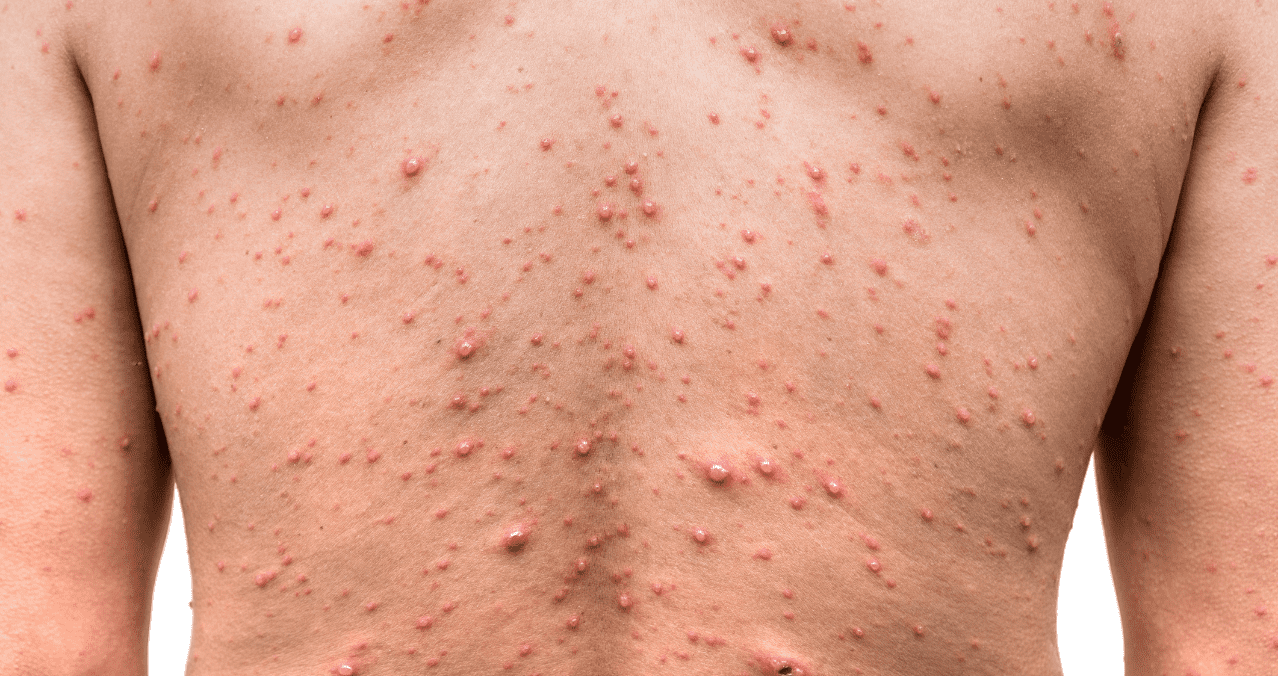1-What is monkeypox?
The monkey pox It is a disease caused by the monkeypox virus. It is a zoonosis, that is, a disease that is transmitted from animals to man. It was discovered in 1959 and the first reported case in humans was a child diagnosed in 1970 in Africa. From then until now, it had remained an endemic disease on the African continent, with several reported outbreaks and a mortality rate that ranged between 3 and 6%.
2-What is the origin of the current outbreak?
The current outbreak is genetically related to one that occurred in 2017 in Nigeria. In May of this year, cases of monkeypox began to be diagnosed in several European countries. The first infections outside Africa are believed to be related to people who traveled to that continent and then participated in parties and crowded events. Then the disease spread throughout Europe, USA and Latin America, especially among men who have sex with other men (MSM), fundamentally with several sexual partners. Worldwide, these people represent about 98% of patients.
3-What are the main symptoms of the disease?
In the current outbreak, the most frequent have been pustules —lesions with pus— in the anogenital area, fever, pustules in regions other than the genital area and the mouth, oral pustules, swollen glands, difficulty breathing, pain head This has led to it being confused with sexually transmitted infections such as herpes and syphilis. However, it is not considered an STI.
4-How is it transmitted?
There are several forms of transmission: through the respiratory tract, by prolonged face-to-face contact, by contact with surfaces and objects contaminated by the secretions of the lesions such as sheets and towels, used by a sick person… However, close and prolonged skin-to-skin contact with a sick person—such as during sexual intercourse—is by far the main and most important route of transmission in the current outbreak. Hence the World Health Organization (WHO) and other health authorities have recommended reducing the number of sexual partners to reduce the risk of getting sick in the general population and, especially, in MSM.
5-How important is the transmission from animals to people in the current outbreak?
Transmission in the current outbreak has been from person to person and does not involve animals. Of course, since it is a zoonosis, the risk of contagion from sick animals exists. Additionally already reported in France the contagion of a dog from a sick person, hence it is important to limit the contact of patients with animals at the time they have symptoms. The WHO also had to regret that monkeys were killed in a locality in Brazil for fear of transmission, which makes no sense.
6-Does the disease only affect men who have sex with other men (MSM) or can it affect the general population?
No, the disease does not only affect MSM. Anyone who maintains close contact with a sick individual is at risk of becoming infected. In fact, although worldwide MSM represent 98% of patients, in Spain, where the first cases were diagnosed outside of Africa, they are 82%, which implies that the disease in that country has been spreading to the population general. This is one of the biggest concerns of health authorities worldwide, given the risk it represents for the most vulnerable population, specifically children and pregnant women.
7-Is it a deadly disease?
Although the only case diagnosed to date in Cuba died a few days after its diagnosis, in general, it is a disease with a benign course. The vast majority of patients have had mild symptoms, with a very low hospitalization rate (3%) and a mortality of 0.03% outside of Africa. . This is because the current outbreak mainly affects young people, between 18 and 50 years old, who are mostly healthy and in countries with robust health systems. However, if it is not possible to control and spread to the general population, especially to risk groups, the number of hospitalized patients and deaths could be higher.
8- Are there medications and vaccines to treat and prevent the disease?
Yes, there are medications that have proven to be effective in managing monkeypox, although they are generally only used when the disease causes significant symptoms. Regarding vaccines, there are both specific drugs for monkeypox and for smallpox. So far, both have been shown to be effective in preventing the disease. The biggest problem is its limited availability, which is not enough to cover the demand even in the countries where the first cases occurred. So early diagnosis, isolation and surveillance of contacts are the best tools to prevent the disease from spreading in our environment, as well as the decrease in the number of sexual partners in the general population and the group at highest risk. .
9-Will it become a new pandemic like COVID-19?
It is quite likely that monkeypox will spread throughout the world. However, there are important differences between the two diseases: the form of transmission, the fact that it is a virus with a double strand of DNA, that it is a disease known for more than 50 years for which there are already treatments and vaccines… All this leads experts to think that it will be less complex to contain. To give you an idea, by March 30, 2020 —a few months after the report of the first coronavirus infections in Wuhan, China—, there were more than 715,000 diagnosed cases of COVID-19 in the world, with more than 33 thousand deceased. This contrasts with the 46,728 diagnosed cases and the 119 deaths to date from monkeypox, of which 107 were in endemic countries, first of all the Democratic Republic of the Congo. Of these deceased, 96 died since January 1 of this year. And only 12 outside of Africa.
10-What is known about the case that died in Cuba and its contacts?
In the case of Cuba, there is only one diagnosed patient, a 50-year-old man of Italian origin, who died a few days after diagnosis. The autopsy revealed sepsis due to bronchopneumonia “to an unspecified germ” and multiple organ damage as the cause of death. In this patient, other infectious pathologies were ruled out. In addition, two days ago, 49 people who had contacts with this individual remained isolated and under surveillance, none of whom had presented symptoms of the disease. Although taking into account the incubation period, it is still early: remember that it can take up to 21 days to appear. In this context, it is logical to assume that new imported cases may appear in the coming weeks and the risk of the disease reaching the country is high, given the behavior in the region and in the main emitters of tourism to Cuba.
















